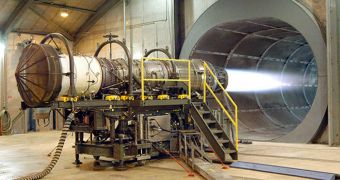Engineers at Airbus, one of the largest airplane manufacturers in the world, announce that they will soon begin installing a novel type of gearing system on the company's airplanes, that is bound to increase the fuel efficiency of future generation of jet engines considerably.
An added advantage of introducing the new system would be a decrease in the vast amount of greenhouse gases (GHG) the aviation industry is releasing straight into the atmosphere every year.
At this point, the new engine, which was designed and built by American engine giant Pratt & Whitney, is scheduled to go on the next-generation Airbus A320 aircraft, which will be put into service in 2016.
The gearing system works so well that it can also lower noise levels for the entire engine, reducing one of the main problems associated with the aviation industry, which is noise pollution. Areas around airports are not exactly good places to live in.
According to Airbus president and CEO Tom Enders, each aircraft outfitted with the new system will be capable of reducing emissions by as much as 3,600 tons of carbon dioxide (CO2) each year.
The new system was developed by experts at the East Hartford, Connecticut-based P&W Next Generation Product Family Group, under the guidance of chief engineer Graham Webb.
He explains that the main thing the new approach has going for it is the fact that the turbine is separated from the air intake fan, which has never been done before.
The turbine is responsible for moving air around through the engine itself, while the fan's job is to capture as much air as possible, to fuel the reaction. The speeds at which the two function when tied to each other may not be the optimum one for either of them.
By separating them, and allowing them to have separate speeds, P&W engineers obtained a jet engine in which both of the fans spin at precisely the optimum speed. This improves fuel efficiency greatly.
According to Embry-Riddle Aeronautical University aerospace engineer Magdy Attia, geared turbofans have been around as a concept since the 1980s. The aviation industry is however extremely resilient to change, Technology Review reports.
The new design was also used to remove some of the components from previous engines. There are some pieces that are simply no longer needed, P&W experts say.
“We were able to remove several low-pressure turbine stages and two low-pressure compressor stages. This adds up to more than 1,500 fewer airfoils in the engine, which significantly reduces maintenance costs for airlines,” Webb concludes.

 14 DAY TRIAL //
14 DAY TRIAL //